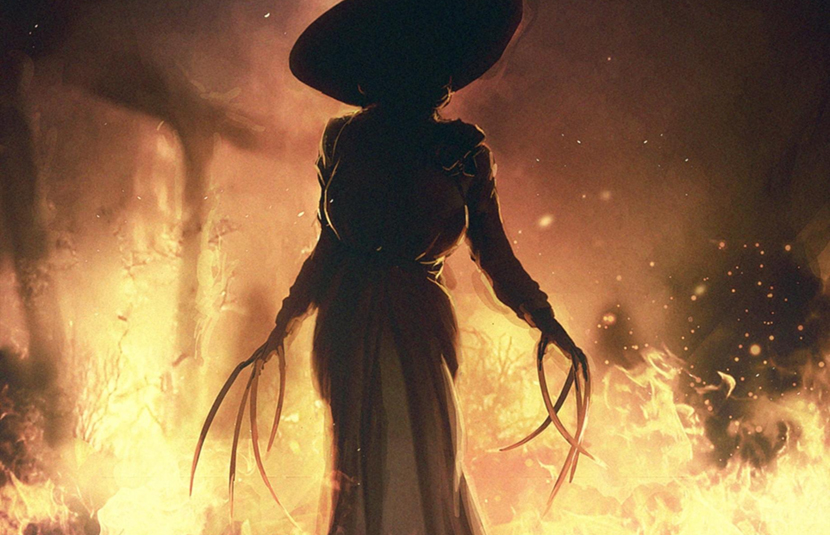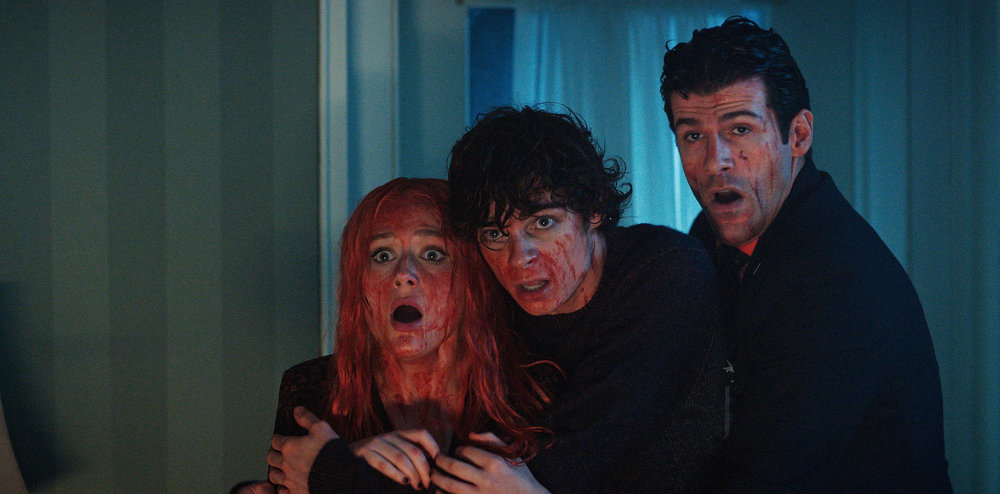Reviews
‘Resident Evil: Village’ Review – Celebrates the Series’ Past Whilst Pushing It Toward a Bright New Future!
Resident Evil: Village is out May 7 on PS4, PS5, Xbox One, Series X/S, PC, and Stadia.

25 years is a long time to stay relevant, especially in the constantly changing landscape of video games. It’s important to remember that going into Resident Evil: Village, the latest installment of Capcom’s beloved survival horror franchise, that the company itself is presenting the game as a celebration of the franchise while pushing the series into a very bright future. It’s a monumental task, but for the most part, Capcom fully succeeds with what it sets out to do with Resident Evil: Village.
Following up on the events of Resident Evil 7: Biohazard, the game picks up 4 years later and follows protagonist Ethan Winters and his wife Mia living an idyllic life with their newborn daughter Rose. Following a vicious attack from series mainstay Chris Redfield, Ethan is then thrown into the titular Village where the nightmare starts all over.
Whereas Resident Evil 7: Biohazard gleaned its style and settings from American horror, Village is stylistically closer to European and gothic horror. Out are the swamps and bayou of Biohazard and in are old-style villages and massive castles. It’s new for the series and admittedly I was worried about how the series could justify its seemingly radical departure, but those fears were quickly put to rest. It’s a setting and aesthetic that not only will please players but horror fans as well.

Gameplay-wise, Village excels in nearly every single department. No longer a stranger to combative situations, Ethan has increased movement and aiming speed compared to his previous outing. Despite this, the game never feels like an outright first-person shooter and I found myself regularly stopping to aim for precise popshots. Crafting is improved too, no longer needing to decide if I want to use chem fluid for bullets or health items instead of pulling from multiple resources. The game actively encourages you to engage with the crafting system while providing you with the resources in the world. It’s a very welcome improvement over its predecessor.
Gone also is the item box. No longer will Ethan have to backtrack to get items and instead carry everything on him using a system that’s a throwback to Resident Evil 4’s block fitting inventory system, and even offers the same currency and merchant systems from said game. This encourages you to engage in combat to acquire currency and resources to level up Ethan and his arsenal, providing a satisfying loop of gameplay.
The most impressive thing about Resident Evil: Village is its level design. Your standard Resident Evil multilayered levels (such as Castle Dimitrescu which plays like a nice call back to the infamous Spencer Mansion) are represented but each area is connected to the village which acts as a hub of sorts. Think less Resident Evil 7 and more Legend of Zelda: Ocarina of Time. Branching out from the hub are 4 different areas that I would call Resident Evil’s take on “dungeons”. Again, borrowing from Zelda is how the game tackles progression where items in one area will unlock areas in previous and future locations and provide a healthy variety of puzzles and environmental obstacles.
Gone are the days of doing variations of the same shadow puzzle over and over. It’s a smart take on level design and helps the game remain constantly engaging, showing you a new area before the current one starts to become stale. Although admittedly one of the late game areas comes dangerously close to overstaying its welcome and nearly derails the experience. Each area is capped off with a boss fight in which no two are the same, and you have yourself one of the most diverse and spectacular entries in the series.

The story kept me interested from start to finish, if not for the reason that Village loves to leave you with more questions than answers before wrapping everything up at the end nicely. Longtime Resident Evil fans will be happy to know and learn how Village connects to the greater overall story of the series and retroactively improves Resident Evil 7: Biohazard’s story in the process. It’s a monumental task but one that Capcom has wonderfully delivered on.
It’s not all roses though. Village’s biggest weakness is its reliance on expecting the player to have full knowledge of the events of Resident Evil 7: Biohazard. While a recap video is provided at the start, I personally found it to be insufficient for fully explaining the events to newer players and would recommend newcomers fully play that game and its DLC before diving into this one.
When Capcom celebrated Resident Evil’s 20th anniversary back in 2016, we were only treated to remasters of previous installments and the promise of the series returning to its roots with the seventh main installment. The series hadn’t quite made its full comeback yet. In 2021 for its 25th anniversary, Capcom seems to have made an installment focusing on the best aspects from all of its entries.
The survival horror games, the action games, the first-person games. All are represented here and are in their top form. It may be cliched to say, but Capcom and the Resident Evil team have truly made what feels like a “greatest hits” of the franchise while pushing it forward into new directions. While newcomers may have to overcome some minor hurdles to get the most out of this experience, I think it goes without saying that it’s worth it to experience one of the greatest Resident Evil games of all time.

This review is based on approximately 25 hours of gameplay featuring complete playthroughs on Normal and Hardcore difficulties. This product was reviewed on Playstation 5. Review code provided by Capcom.
Resident Evil: Village is out May 7 on PS4, PS5, Xbox One, Series X/S, PC, and Stadia.

Reviews
“Chucky” Season 3: Episode 7 Review – The Show’s Bloodiest Episode to Date!

Not even death can slow Chucky in “There Will Be Blood,” the penultimate episode of “Chucky” Season 3. With the killer receiving a mortal blow in the last episode, Charles Lee Ray (Brad Dourif) can now take full advantage of the White House’s bizarre supernatural purgatory, leaving him free to continue his current reign of terror as a ghost. While that spells trouble for Jake Wheeler (Zackary Arthur), Devon (Bjorgvin Arnarson), and Lexy (Alyvia Alyn Lind), it makes for an outrageously satisfying bloodbath heading into next week’s finale.
“There Will Be Blood” covers a lot of ground in short order, with Charles Lee Ray confronting his maker over his failures before he can continue his current path of destruction. Lexy, Jake, and Devon continue their desperate bid to find Lexy’s sister, which means seeking answers from the afterlife. They’re in luck, considering Warren Pryce (Gil Bellows) enlists the help of parapsychologists to solve the White House’s pesky paranormal problem. Of course, Warren also has unfinished business with the surviving First Family members, including the President’s assigned body double, Randall Jenkins (Devon Sawa). Then there’s Tiffany Valentine (Jennifer Tilly), who’s feeling the immense weight of her looming execution.

CHUCKY — “There Will Be Blood” Episode 307 — Pictured in this screengrab: (l-r) Brad Dourif as Charles Lee Ray, Chucky — (Photo by: SYFY)
Arguably, the most impressive aspect of “Chucky” is how series creator Don Mancini and his fantastic team of writers consistently swing for the fences. That constant “anything goes” spirit pervades the entire season, but especially this episode. Lexy’s new beau, Grant (Jackson Kelly), exemplifies this; he’s refreshingly quick to accept even the most outlandish concepts – namely, the White House as a paranormal hub and that his little brother’s doll happens to be inhabited by a serial killer.
But it’s also in the way that “There Will Be Blood” goes for broke in ensuring it’s the bloodiest episode of the series to date. Considering how over-the-top and grisly Chucky’s kills can be, that’s saying a lot. Mancini and crew pay tribute to The Shining in inspired ways, and that only hints at a fraction of the bloodletting in this week’s new episode.

CHUCKY — “There Will Be Blood” Episode 307 — Pictured in this screengrab: Brad Dourif as Charles Lee Ray — (Photo by: SYFY)
“Chucky” can get away with splattering an insane amount of blood on the small screen because it’s counterbalanced with a wry sense of humor and campy narrative turns that are just as endearing and fun as the SFX. Moreover, it’s the fantastic cast that sells it all. In an episode where Brad Dourif makes a rare appearance on screen, cutting loose and having a blast in Chucky’s incorporeal form, his mischievous turn is matched by Tiffany facing her own mortality and Nica Pierce’s (Fiona Dourif) emotionally charged confrontation with her former captor.
There’s also Devon Sawa, who amusingly continues to land in Chucky’s crosshairs no matter the character. Season 3 began with Sawa as the deeply haunted but kind President Collins, and Sawa upstages himself as the unflappably upbeat and eager-to-please doppelganger Randall Jenkins. That this episode gives Sawa plenty to do on the horror front while playing his most likable character yet on the series makes for one of the episode’s bigger surprises.
The penultimate episode of “Chucky” Season 3 unleashes an epic bloodbath. It delivers scares, gore, and franchise fan service in spades, anchored by an appropriate scene-chewing turn by Dourif. That alone makes this episode a series highlight. But the episode also neatly ties together its characters and plot threads to pave the way for the finale. No matter how this season wraps up, it’s been an absolute pleasure watching Chucky destroy the White House from the inside.
“Chucky” Season 3: Part 2 airs Wednesdays at 10/9c on USA & SYFY.













You must be logged in to post a comment.